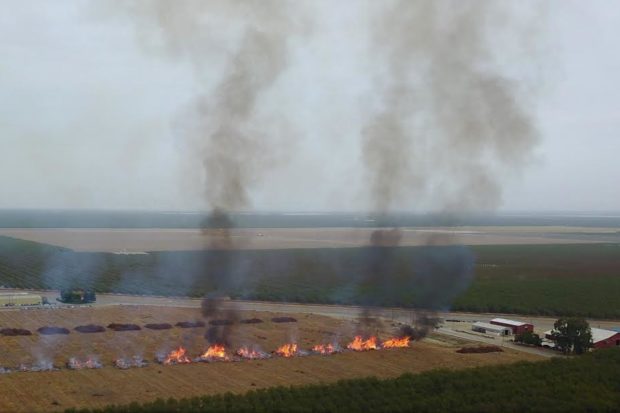
According to the 2022 State of the Air Report, which is published by the American Lung Association every year, the Fresno-Madera area took the lead as the most polluted city in the country for fine particle pollution, also known as PM2.5. For the last decade, that record was held by Bakersfield, but Fresno is now leading the charge.
Regardless of this change in the ranking, the Fresno, Bakersfield and Visalia metro areas have the three highest annual concentrations of PM2.5 in the country. Again, our area ranks top in the nation for unwanted traits.
Particle pollution kills. PM2.5 (particles that are 2.5 microns are smaller in diameter) can evade our natural defenses and infiltrate deep into our lungs.
PM2.5 is associated with a range of respiratory impacts, the development of respiratory diseases and premature death. Furthermore, fine particles can enter the bloodstream causing inflammation in the brain and heart. PM2.5 is also associated with heart attack, heart disease and stroke.
So what are our local and state regulators doing to address this imminent public health crisis? It’s a mixed bag.
On one hand, Assembly Member Joaquin Arambula (D–Fresno) is pushing a bill that would require the California Air Resources Board (CARB), our state-level air regulator, to have a more active role in developing clean-air strategies for our region if we fail yet again to reach an attainment deadline.
This bill, if passed, could really help clean up the air basin, but opposition is already strong from local governments worried about losing “local control.”
On the other hand, as our state-level legislators and agencies are rushing to solve the climate crisis, they might be throwing our Central Valley communities under the bus.
The CARB, in its Draft 2022 Scoping Plan, which is attempting to chart a path to carbon neutrality by 2045, proposes relying on 80 million metric tons of carbon dioxide, the climate-warming gas, to be captured by massive industrial facilities and piped underground for permanent storage.
This process is referred to as carbon capture and storage (CCS), and while it seems like a good climate strategy (we have too much carbon in the air!), it’s a parasitic technology that expands our already existing polluting facilities.
The European Environment Agency found that, because the CCS equipment requires a lot of energy to run, local air pollution increased by up to 25%! So we might be pulling down carbon, but we’re releasing more fine particles and smog into the San Joaquin Valley.
Seems like a win-lose situation, especially for breathers in the most polluted city in America. The piping and storage of carbon dioxide in the ground is also poorly regulated, and risks include dangerous leaks and contamination of drinking water.
Lastly, the state and our local Air District are in the process of developing a plan to solve our ozone pollution. We have upcoming attainment deadlines of 2031 and 2037. Will we make it?
The state is proposing an array of new rules and regulations, including a first-in-the-nation rule to electrify short-haul trucks (!), while our Air District seems to be sitting back and hoping the state will do all the work. As of yet, no new programs have been developed by the Air District to speed up our attainment of ozone standards.
The fate of our air and climate hangs in the balance. Get involved so residents of the most polluted city in America get a say in our own destiny. If we don’t stand up for Fresno, who will?
Take Action!
With Fresno recently being named the most polluted city in the country for fine particle pollution, what can you do about reversing that situation?
- Call your state legislators and let them know that you support AB 2550, which would require the California Air Resources Board (CARB) to circumvent the San Joaquin Valley Air Pollution Control District by developing new air pollution regulations for industries in areas where local regulators have failed to meet clean air standards on time. The bill faces an uphill battle.
- Join the public hearing at the CARB on June 23 at 9 a.m. to engage in the conversation about carbon capture and storage. Visit ww2.arb.ca.gov/events for more information.
- Join the last public workshop on the Valley air district’s ozone plan on June 1 at 4 p.m. For more information, visit ww2.valleyair.org/. Click on Public Participation on the left panel and then select Workshops & Hearings.
